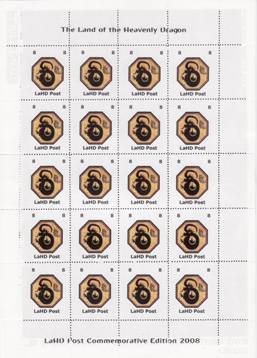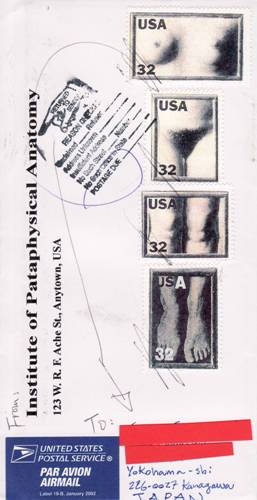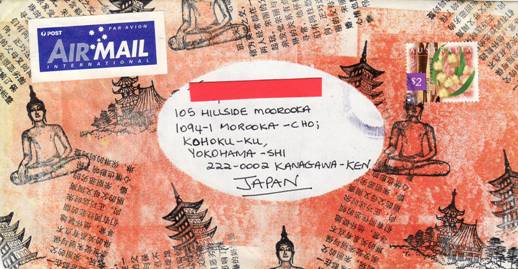Mail Art: A D.I.Y. Guide
So, you want to get involved with mail art? What should you do to get started?
1) Decide: (a) a theme; (b) the size of the works you want to receive (e.g. postcards or A4); (c) a deadline by which people have to send their contributions.
Of course (a) and (b) can be left free, and the project can be ongoing, i.e. without a deadline.
2) Write and spread the call/invitation. The four main tools you can use are: (a) flyers; (b) zines; (c) e-mail and (d) mail art web sites.
3) Make the documentation. This can be: (a) a traditional paper catalogue with an address list of all the participants; (b) a CD-Rom; (c) an online doc (a website or a blog).
When you spread your call, remember to specify what kind of doc you are going to produce.
4) At the end of the project, send to each participant a copy of the doc [in case you have produced (3-a) or (3-b)].
These are four simple steps with many details left out. For more information you read this article on my blog:
The Joys and Pains of Organizing Mail Art.


Now, for those of you who don’t want to start your own project just yet, the best way to join the Network is to take part in one of the many mail art projects or to contact the mail artists directly.

Wipe
Send 40 sheets of toilet tissue. Size: 14x11cm max. Open theme and technique. No organic material or traces please. Edition made every 20 participants.
Send your contributions to: Field Study, P.O. Box 1838, Geelong, VIC 3220, Australia.
Field Report 2009 – Journal of Field Study International
Send 100 copies of a documentation of your performance, instruction, manifesto, journey, and work signed: “Field Study Emanation by…” + artist’s name. Copies have to be flat and landscape format. Size: 5 1/2”x8 1/2” or 15 x 21cm. Leave 2cm on the left-hand side for the binding. Deadline: December 31, 2009
Send to Field Study (see address above).
For more calls and projects, you can check out these websites:
www.dragonflydream.com
www.crosses.net/mailartforum
At the end of many projects you will get a documentation and an address list of all the participants that you can use to contact them. After that, it’s up to you.
Of course, things at first move very slowly, and it may be a little frustrating, but your efforts will be eventually repaid. Just remember that the more you put your time and energy into it, the more you get in return. But let me warn you: mail art is like a drug, and once you taste its pleasures, there’s no way out. You will end up knowing by heart when the postman comes, and will live for that moment. Any day without mail will be a gloomy day, and you will hate Sundays because on Sundays the postman doesn’t come.
If you want to read more about mail art-related subjects, you may want to check the English magazine KAIRAN. One copy costs 500 yen or $5.00 postpaid worldwide.
Copies can be ordered at ilovemondo@yahoo.co.jp.

Randy Swank
Randy Swank



